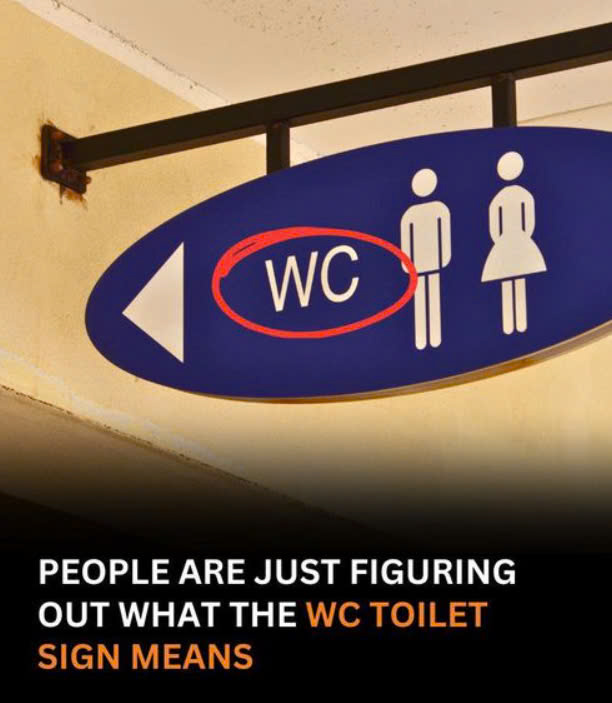Many people have seen the letters “WC” on restroom signs, but how many actually know what it stands for? If you’ve never stopped to think about it, you’re not alone. Despite its frequent appearance, many people are only now figuring out what this abbreviation truly means.

In the United States, we use a variety of names for public restrooms. You might hear people call it the bathroom, the restroom, the lavatory, or even, for those who like to get creative, the throne. But that little “WC” sign? It’s something of a mystery for most Americans. However, thanks to the internet and its endless stream of surprising information, that confusion is starting to clear up.
The internet, a treasure trove of bizarre yet fascinating facts, has taught us all sorts of things. Whether it’s revealing the hidden features of common items like shopping cart hooks or uncovering what the letters “M&M” really stand for, the web is always ready to surprise us. Now, it’s shining a light on the long-standing question about what “WC” really means.
Recently, people have been discussing the meaning of “WC” online, and the reactions have been priceless. One person commented, “I’m so glad someone finally asked about this. I’ve seen it for years but never bothered to figure it out.” Another user wrote, “How is it possible that I’ve had a ‘WC’ sign in my own home and never knew what it meant?” A third added, “I was 23 years old when I found out the meaning behind those letters.”
Of course, some people are shocked that this is even a question. One person remarked, “Seriously? How does anyone not know this?” Another said, “I thought it was just common knowledge!”
So, what does “WC” actually stand for? The answer is both simple and logical: it stands for “water closet.” The term goes all the way back to the early days of indoor plumbing when running water in homes was considered a luxury. When indoor plumbing was first introduced, many people began converting small closets into spaces where they could install toilets. These closets, equipped with water for flushing, became known as water closets.
Nowadays, most people refer to these spaces as bathrooms. But historically, the bathroom was strictly a room for bathing, and there wasn’t a toilet in sight. In fact, in older homes, the toilet and bathtub were often located in completely separate rooms. This separation was common because plumbing for toilets was added after bathrooms were already established as spaces just for bathing.
A popular TikToker, @itsnathannyc, shed light on this in a now-deleted video. He explained, “Before indoor plumbing, the bathroom was only used for the bathtub. People had to fetch water from outside, heat it up, and pour it into the tub. When indoor plumbing became more widespread, they already had a room for bathing, so the toilet went into a small closet. It was the most convenient place to install it.”
These small, water-filled closets soon became known as “water closets,” and the abbreviation “WC” was born. This term was coined in the early 1900s when toilets were often installed in unused closets or cupboards. Over time, the phrase stuck, and even though most homes today have full bathrooms, the term “WC” continues to be used, particularly in public restrooms and signage in some parts of the world.
So, next time you see a “WC” sign, you’ll know exactly what it means. While water closets are a thing of the past, the abbreviation lives on, continuing to confuse and intrigue people everywhere. Now, you’re in on the secret, and you can confidently explain it to the next person who asks.





